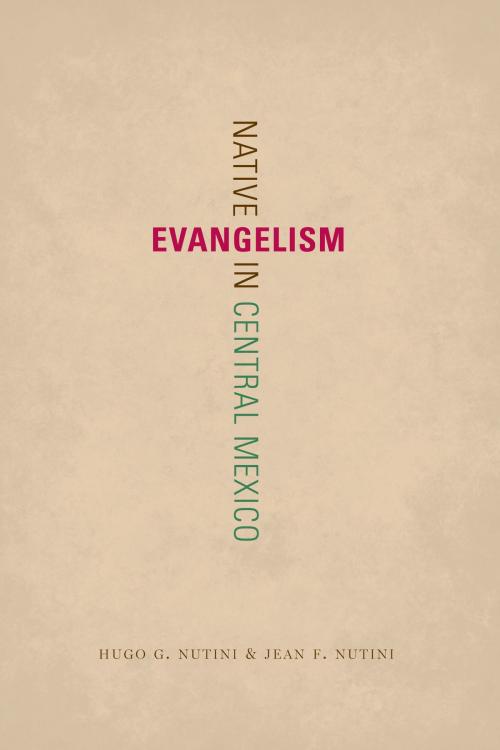Native Evangelism in Central Mexico
Nonfiction, History, Americas, Mexico, Religion & Spirituality, Christianity, Church, Church History, Social & Cultural Studies, Social Science, Anthropology| Author: | Hugo G. Nutini, Jean F. Nutini | ISBN: | 9780292758438 |
| Publisher: | University of Texas Press | Publication: | August 15, 2014 |
| Imprint: | University of Texas Press | Language: | English |
| Author: | Hugo G. Nutini, Jean F. Nutini |
| ISBN: | 9780292758438 |
| Publisher: | University of Texas Press |
| Publication: | August 15, 2014 |
| Imprint: | University of Texas Press |
| Language: | English |
Evangelical Christianity is Mexico's fastest-growing religious movement, with about ten million adherents today. Most belong to Protestant denominations introduced from the United States (e.g., Jehovah's Witnesses, Seventh-day Adventists), but perhaps as many as 800,000 are members of homegrown, "native" evangelical sects. These native Mexican sects share much with the American denominations of which they are spinoffs. For instance, they are Trinitarian, Anabaptist, and Millenarian; they emphasize a personal relationship with God, totally rejecting intermediation by saints; and they insist that they are the only true Christians. Beyond that, each native sect has its distinctive characteristics.This book focuses on two sharply contrastive native evangelical sects in Central Mexico: Amistad y Vida (Friendship and Life) and La Luz del Mundo (The Light of the World). The former, founded in 1982, now has perhaps 120,000 adherents nationwide. It is nonhierarchical, extremely egalitarian, and has no dogmatic directives. It is a cheerful religion that emphasizes charity, community service, and personal kindness as the path to salvation. It attracts new members, mainly from the urban middle class, through personal example rather than proselytizing. La Luz del Mundo, founded in 1926, now has about 350,000 members in Mexico and perhaps one million in the hemisphere. It is hierarchically organized and demands total devotion to the sect's founder and his son, who are seen as direct links to Jesus on Earth. It is a proselytizing sect that recruits mainly among the urban poor by providing economic benefits within the congregations, but does no community service as such.Based on ten years of fieldwork (1996–2006) and contextualized by nearly fifty years of anthropological study in the region, Native Evangelism in Central Mexico presents the first ethnography of Mexico's native evangelical congregations.
Evangelical Christianity is Mexico's fastest-growing religious movement, with about ten million adherents today. Most belong to Protestant denominations introduced from the United States (e.g., Jehovah's Witnesses, Seventh-day Adventists), but perhaps as many as 800,000 are members of homegrown, "native" evangelical sects. These native Mexican sects share much with the American denominations of which they are spinoffs. For instance, they are Trinitarian, Anabaptist, and Millenarian; they emphasize a personal relationship with God, totally rejecting intermediation by saints; and they insist that they are the only true Christians. Beyond that, each native sect has its distinctive characteristics.This book focuses on two sharply contrastive native evangelical sects in Central Mexico: Amistad y Vida (Friendship and Life) and La Luz del Mundo (The Light of the World). The former, founded in 1982, now has perhaps 120,000 adherents nationwide. It is nonhierarchical, extremely egalitarian, and has no dogmatic directives. It is a cheerful religion that emphasizes charity, community service, and personal kindness as the path to salvation. It attracts new members, mainly from the urban middle class, through personal example rather than proselytizing. La Luz del Mundo, founded in 1926, now has about 350,000 members in Mexico and perhaps one million in the hemisphere. It is hierarchically organized and demands total devotion to the sect's founder and his son, who are seen as direct links to Jesus on Earth. It is a proselytizing sect that recruits mainly among the urban poor by providing economic benefits within the congregations, but does no community service as such.Based on ten years of fieldwork (1996–2006) and contextualized by nearly fifty years of anthropological study in the region, Native Evangelism in Central Mexico presents the first ethnography of Mexico's native evangelical congregations.










![Cover of the book [Un]framing the "Bad Woman" by Hugo G. Nutini, Jean F. Nutini](https://www.kuoky.com/images/2014/july/300x300/9780292757639-qNmz_300x.jpg)




